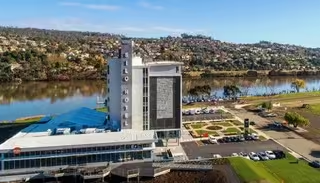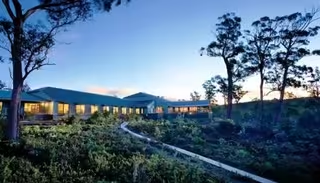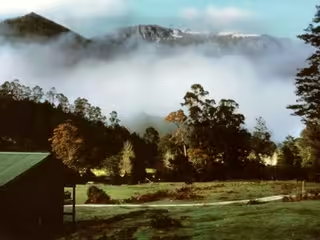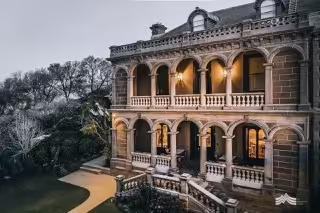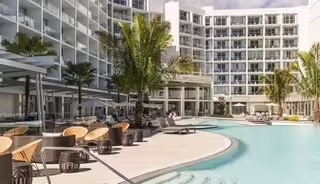Australian Wildlife
Sept. 30th - Oct.16th, 2026
6 Spaces Available!

Capture the Beauty of Australian Wildlife Photography Tour
Ladies, come join us down under on this bucket-list wildlife adventure…
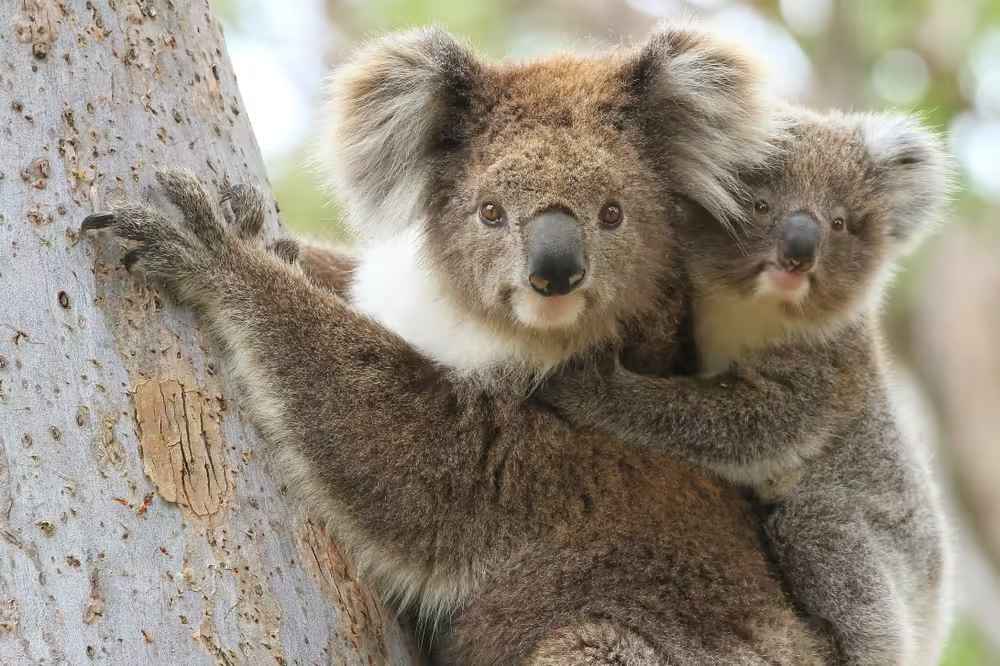
Koala Bear
This remarkable 17-day all-women wildlife photography tour will take you deep into the heart of Australia’s diverse ecosystems, just in time to witness an explosion of life as marsupial babies emerge. Our journey offers photographers the chance to capture some of the country’s most iconic wildlife species against the breathtaking backdrops of Tasmania, Kangaroo Island, and Far North Queensland.
Tasmania:
A Haven for Unique Wildlife Tasmania is a top destination for wildlife photographers, renowned for its ancient landscapes and rare, endemic species. In October, the island teems with new life as marsupials such as baby wombats and Bennett’s wallabies begin emerging from their mothers’ pouches. You’ll have the rare chance to photograph the elusive Tasmanian devil, a species found only on this island, in its natural habitat. Tasmania’s nocturnal wildlife, including eastern quolls and pademelons, offer unique low-light photography challenges, perfect for creating striking images.
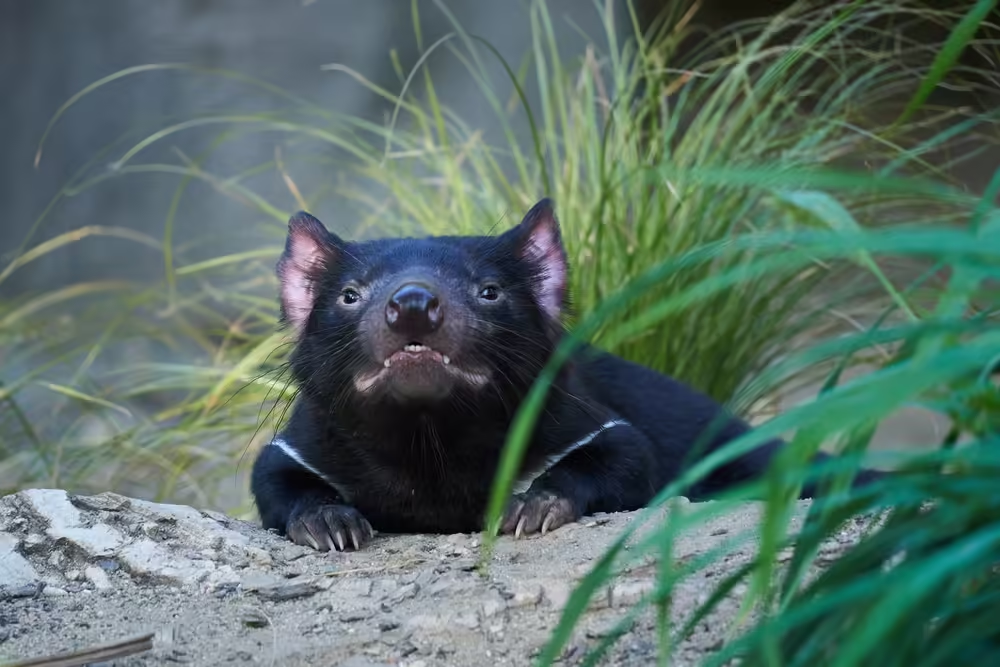
Tazmanian Devil
Bird photographers will be captivated by the swift parrot, a critically endangered species, along with the yellow-tailed black cockatoo and kookaburra, whose laugh fills the forests.Kangaroo Island: A Wildlife Sanctuary Next, we move to Kangaroo Island, often referred to as Australia’s Galápagos. This island is a sanctuary for some of the country’s most beloved species. October is prime time for marsupial babies, and you’ll capture shots of kangaroo joeys hopping alongside their mothers and koala cubs nestled in eucalyptus trees. Seal Bay is home to a colony of Australian sea lions, providing dynamic wildlife photography opportunities as they play on the beach and in the surf.
Kangaroo Island’s birdlife is equally impressive, including species such as the rare glossy black cockatoo and white-bellied sea eagle. The Southern Lights can also be visible here in October, adding another dimension to your night photography experience. With its rugged coastlines, pristine beaches, and diverse wildlife, Kangaroo Island offers a treasure trove of photography possibilities.
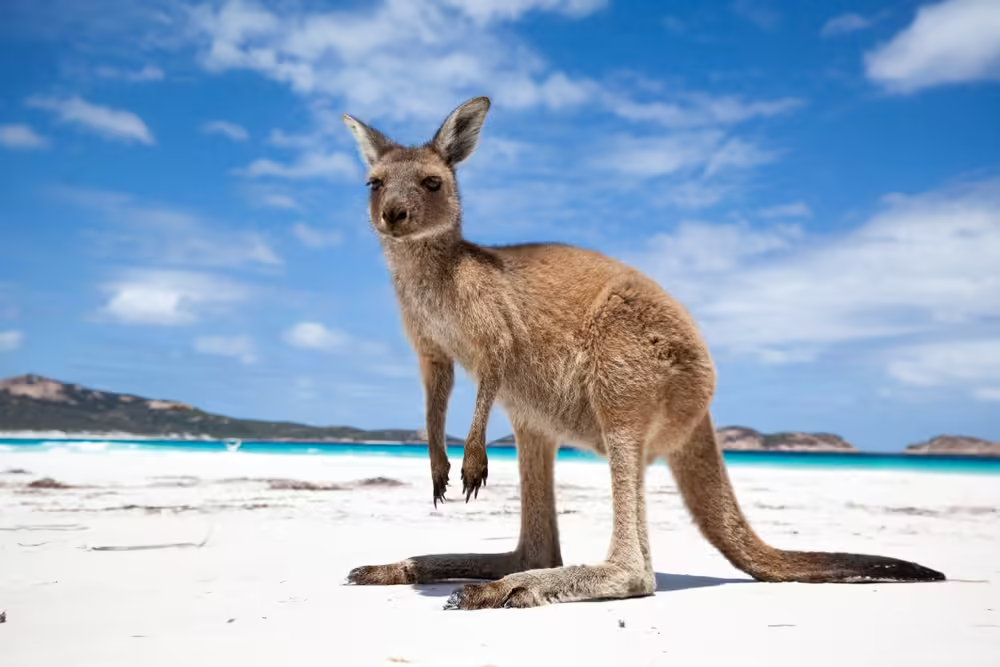
Kangaroo Joey
Far North Queensland:
The Ancient Daintree and Great Barrier Reef Our final destination is the lush rainforests of Far North Queensland, where the Daintree Rainforest—the world’s oldest tropical rainforest—meets the Great Barrier Reef. This region is home to some of Australia’s most iconic species, such as the Southern cassowary, a large, flightless bird that often appears with chicks during this time of year. Here we will get to experiance macro photography in one of the richest environments in the world, you’ll also have the chance to capture the intricate beauty of the rainforest’s amphibians, including the striking white lip tree frog and so many more amazing species.
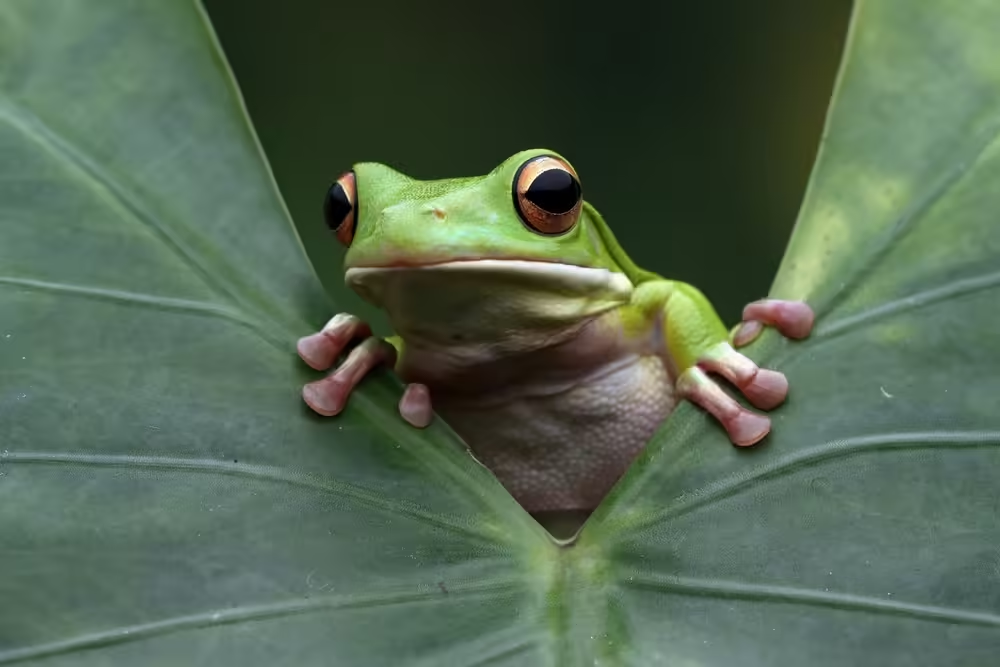
White-lipped Frog
The rainforest is teeming with other wildlife, from the elusive tree kangaroos to the spectacled flying fox. We’ll explore the Daintree River, home to saltwater crocodiles, adding an element of excitement to your photography experience. Additionally, for those interested in underwater photography, a day trip to the Great Barrier Reef will allow you to capture the vibrant marine life and coral formations of this UNESCO World Heritage site.
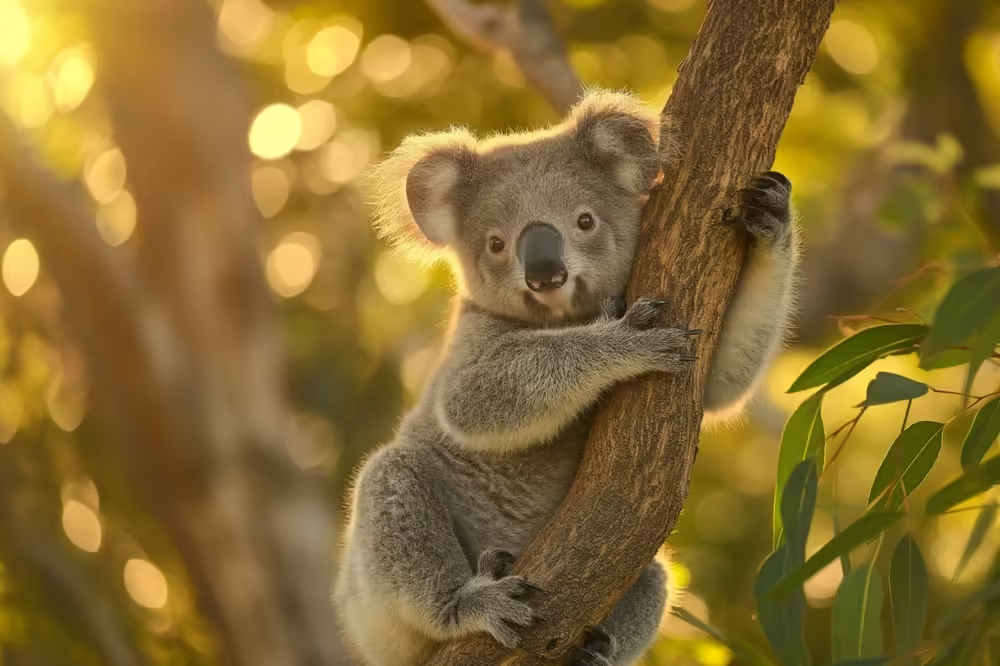
Koala Bear
Tasmania:
Tasmania is known for its unique and often endemic wildlife species. October is an excellent time to see young marsupials as they start emerging from their mothers’ pouches.
Mammals:
- Tasmanian Devil: Found only in Tasmania, this iconic carnivorous marsupial is best photographed at dusk or during the night.
- Eastern Quoll: Another nocturnal predator, which comes in both black and light fawn color variations.
- Bennett’s Wallaby: A common sight across Tasmania, often with young joeys in their pouches in October.
- Common Wombat: Easily photographed during the day in alpine areas like Cradle Mountain.
- Pademelon: A small marsupial similar to a wallaby, often seen in dense forests.
- Platypus: Look for these unusual monotremes in Tasmania’s freshwater rivers and lakes, particularly in the early morning and late evening.
- Long-nosed Potoroo: A small nocturnal marsupial that can be spotted in forested areas.
- Spotted-tailed Quoll: A larger quoll species, though rare and elusive.
Birds:
- Swift Parrot: Critically endangered, best seen in spring when they migrate to Tasmania for breeding.
- Orange-bellied Parrot: Another critically endangered species, often found in remote southwest Tasmania.
- Green Rosella: Tasmania’s largest parrot, easily spotted in open woodlands and forests.
- Yellow-tailed Black Cockatoo: A striking bird known for its loud calls and distinct appearance.
- Wedge-tailed Eagle: Australia’s largest bird of prey, often seen soaring over mountains and valleys.
- Kookaburra: Famous for their distinctive “laugh,” kookaburras can be seen perched on branches in forests and near water bodies.
- Hooded Plover: A small shorebird, often spotted along Tasmania’s coastal areas.
- Black Currawong: Unique to Tasmania, a bold bird found in highland areas.
Amphibians and Reptiles:
- Tasmanian Tree Frog: Found in the wetter regions of Tasmania.
- Southern Brown Tree Frog: Common in a range of habitats, from forests to wetlands.
- Tiger Snake: One of the more common reptiles in Tasmania, often found basking in the sun.
Kangaroo Island
Kangaroo Island is often referred to as a wildlife sanctuary. October is an ideal time to photograph marsupial babies as they start to emerge from pouches.
Mammals:
- Kangaroo Island Kangaroo: A subspecies of the Western Grey Kangaroo, seen grazing in open fields with joeys in tow.
- Koala: Though not native to the island, koalas have established a significant population here, often seen with their babies in October.
- Australian Sea Lion: At Seal Bay, you’ll witness large colonies of sea lions basking on the beach.
- Short-beaked Echidna: A spiny monotreme, often seen during the day foraging for ants.
- Tammar Wallaby: A small wallaby species common in the island’s bushland, often with young joeys.
- Common Brushtail Possum: Nocturnal and often seen at dusk or during night walks.
- Southern Brown Bandicoot: Rare but possible to spot in dense undergrowth.
Birds:
- Glossy Black Cockatoo: An endangered species endemic to the island, with a small, recovering population.
- White-bellied Sea Eagle: Seen along the island’s rugged coastline, hunting for fish.
- Cape Barren Goose: Large, grey geese often seen grazing in open fields.
- Osprey: Known to nest on cliff edges, these birds of prey can be spotted fishing in the island’s coastal waters.
- Eastern Spinebill: A small honeyeater, often seen around flowering plants.
- Superb Fairywren: Known for its bright blue plumage, this bird can be found hopping through shrubs.
- Pelican: Large Australian Pelicans can be seen along the coast and near inland water bodies.
- Wedge-tailed Eagle: Seen soaring above the island’s interior.
Amphibians and Reptiles:
- Eastern Banjo Frog: Also called the Pobblebonk, often heard rather than seen in wetlands.
- Southern Bell Frog: Found in wetter areas of the island, offering good macro photography opportunities.
- Heath Goanna: A large monitor lizard, commonly found in the island’s woodlands.
Far North Queensland (Daintree Rainforest and Great Barrier Reef) This tropical region offers a rich diversity of wildlife, from ancient rainforest species to marine life on the reef.
Mammals:
- Southern Cassowary: A large, flightless bird that is an iconic species of the Daintree Rainforest, often seen with chicks in October.
- Tree Kangaroo: A rare sight, but these arboreal marsupials are occasionally seen in the rainforest canopy.
- Spectacled Flying Fox: A large fruit bat, often seen hanging in colonies from trees or flying at dusk.
- Musky Rat-Kangaroo: A small marsupial found scurrying through the forest floor.
- Dingo: Wild dogs can occasionally be spotted in more remote areas.
- Northern Brown Bandicoot: Another small marsupial that can be found foraging in the undergrowth.
- Sugar Glider: This small gliding possum can be spotted at night, leaping between trees.
Birds:
- Victoria’s Riflebird: One of Australia’s birds of paradise, known for its elaborate courtship dance.
- Buff-breasted Paradise Kingfisher: A striking bird with vibrant blue and orange plumage.
- Great Bowerbird: Known for its intricate bower displays to attract mates.
- Noisy Pitta: A beautifully colored ground-dwelling bird often heard before it’s seen.
- Double-eyed Fig Parrot: One of Australia’s smallest parrots, often seen feeding on figs in the rainforest.
- Little Kingfisher: A small, bright blue bird often found near rainforest streams.
- Azure Kingfisher: Frequently seen hunting along rivers and creeks.
- White-bellied Sea Eagle: These impressive birds can be seen flying along the Daintree River.
- Australian Brush Turkey: Often seen wandering around the forest floor.
Amphibians and Reptiles:
- White-lined Tree Frog: A striking amphibian found in the Daintree, a great subject for macro photography.
- Green Tree Frog: One of Australia’s most famous frogs, commonly found in the rainforest.
- Boyd’s Forest Dragon: A lizard species endemic to the wet tropics, often seen clinging to trees.
- Saltwater Crocodile: Found along rivers and creeks, offering dramatic photographic opportunities.
- Amethystine Python: Australia’s largest snake, occasionally seen in the Daintree canopy.
Marine Life (Great Barrier Reef):
- Green Sea Turtle: Commonly spotted while snorkeling or diving on the reef.
- Clownfish: Known for its symbiotic relationship with anemones, a highlight for underwater photography.
- Reef Shark: Harmless and often spotted around coral reefs.
- Giant Clam: Found embedded in coral reefs, providing vibrant underwater macro photography opportunities.
- Manta Ray: These graceful creatures can occasionally be seen gliding through the water.
Get Idea of Others Photography Tours: Botswana Safari
Meet your leader…
Sept. 30th – Oct.16th, 2026
Day 1 (Sept. 30th)
Launceston, Tasmania
Today is arrival day into Launceston. You fly to Sydney International Airport (SYD) and then on to Launceston (LST) airport. We recommend arriving in Sydney or Launceston at least one day early to allow for unforeseen delays and the significant (depending on where you are coming from) time change.
Make your way independently to your accommodations. Guests will be provided with a list of local activities to explore.
6:00 pm Welcome dinner at hotel.
Accomodations: Peppers Silo Launceston
Meals: D
Day 2 (Oct. 1st)
Cradle Mountain, Tasmania
At 9 am, meet your local guide to commence your photo/wildlife tour of Tasmania, The first stop will be Stunning Tamar Valley Wetlands. Not far from Launceston, you’ll find a wetland area that hosts thousands of birds, some of the endemic to Tasmania. Walk on boardwalks and learn a lot about Tasmania’s bird migration.
Afterwards, continue your journey via Deloraine and Sheffield, also known as the town of Murals towards the UNESCO world-heritage listed Cradle Mountain National Park..
Cradle Mountain National Park is a World Heritage wilderness area, with an abundance of wildlife and flora and fauna. The craggy profile of Cradle Mountain itself is mirrored in pine fringed Dove Lake. The track to the top of the mountain (1,545 metres above sea level) is an eight-hour return walk, but there are many other shorter, easier walks lower down.
If time permits, enter the National Park to find some of the local wombats grazing on the foothills of Ronny Creek
Accommodation: Cradle Mountain Hotel
Meals: B, L, AT (afternoon tea) Dinner on your own (not included)
Day 3 (Oct. 2nd)
Cradle Mountain, Tasmania
After breakfast, visit Cradle Mountain National Park with its diverse landscapes. Spot craggy peaks and mirroring lakes. Enjoy an interpreted bush walk through the National Park among Tasmanian rainforest and the native Pandani, the tallest heath plant in the world.
You may also see birdlife species such as Forest Ravens, Currawongs and Wedge-tailed Eagles.
In the late afternoon visit Devils Cradle Wildlife Sanctuary on an informative Sunset Experience and behind-the-scenes tour to gain insights about the world’s largest carnivorous marsupial and witness the feeding of this unique species..
Accommodation: Cradle Mountain Hotel
Meals: B, L, AT Dinner on your own (not included)
Day 4 (Oct. 3rd)
Loongana, Tasmania
After breakfast, depart from Cradle Valley and travel to Mole Creek Karst National Park, for a tour of Marakoopa Caves. Explore this miraculous underground world with its glow worms, large caverns, rim pools and underground streams.
Continue to the Leven Canyon region and to Mountain Valley Wilderness. Mountain Valley is a sanctuary for wildlife. This lost valley is home to many species of birds from tiny wrens to the Tasmanian sub species of the wedge tail eagle, masked owl and the white morph of the grey goshawk. Eleven of the twelve Tasmanian endemic birds inhabit the reserve making it ideal for bird watching at any time of the year.
Accommodation: Mountain Valley Wilderness Lodge
Meals: B,L,D
Day 5 (Oct. 4th)
Loongana, Tasmania
Start your day with a visit to the Tasmanian Arboretum. A large conservation land with an abundance of wildlife. You may have the chance to see the elusive platypus and many other species.
After lunch, visit the Leven Canyon regional reserve. Leven Canyon feels like a world away. High elevation alpine vegetation, fresh mountain air, well-maintained tracks and informational displays that educate you on Tasmania’s wild flora and fauna await in this regional reserve. And it’s a great way to experience an entirely different landscape from the north coast.
As darkness descends you will be visited at your door by wallabies (Pademelon), brushtail possums including Tasmanian Devils and Quolls both on the threatened species list.
Accommodation: Mountain Valley Wilderness Lodge
Meals: B,L,D
Day 6 (Oct. 5th)
Hobart, Tasmania
This morning, leave the leave the Mountain Valley area and travel back into civilization. On the Heritage Highway between Campbell Town and Ross, your guide will offer some detour to catch great photo opportunities of lovely villages and even Windmills. After lunch in a local café, arrive into Hobart at around 4 pm..
Accommodations: Lenna of Hobart Hotel
Meals: B, L Dinner on your own (not included)
Day 7 (Oct. 6th)
Kangaroo Island
You will be met at your accommodation for your private transfer to Hobart airport.
Fly Hobart to Kangaroo Island via Adelaide.
On arrival at Kingscote Airport, you will be met by your private driver and vehicle for transfer to your accommodation.
Accommodation: Mecure Kangaroo Island Lodge
Meals: B, Lunch and Dinner on your own (not included)
Day 8 (Oct. 7th)
Kangaroo Island
Begin with a visit to Duck Lagoon, a freshwater habitat for ducks (regular haunt for freckled ducks when they disperse from outback waterways), swans and a range of other species. Classic Australian landscapes abound with massive red-gums reflected in still waters. These stately gums are home to pardalotes and a range of honeyeaters, including the white-eared, white-naped and brown-headed. This is also a prime spot for Koalas, which are partial to the Eucalypts along the creek line.
Continue to a nearby private sanctuary known as Cygnet Park, where a large scale rewilding project has converted former pasture into diverse wildlife habitat. Get an orientation to the Island as your guide prepares a delicious barbecue of fresh fish, halloumi, grilled potatoes and salad, served with some choice local wines.
After lunch, board a rigid-hulled inflatable boat operated by Kangaroo Island Marine Adventures to explore the Island from the ocean. Photographic opportunities incorporate coastal landscapes, raptors (white-bellied sea-eagles are the most frequently encountered species), cormorants, long-nosed fur seals and bottle-nosed dolphins. Seasonally this can include a “swim with” experience, which offers underwater photography opportunities in shallow water for guests with the appropriate equipment.
End the day on the north coast in the Stokes Bay valley, seeking out the opportunity to photograph Kangaroo Island kangaroos as they emerge to feed.
Accommodation: Mecure Kangaroo Island Lodge
Meals: B, L, Dinner on your own (not included)
Day 9 (Oct. 8th)
Kangaroo Island
Begin the day in the Island’s northwest in an important private wildlife refuge with Kangaroo Island Land for Wildlife. Here, gain an insight into (and take part in) the fantastic conservation work conducted by Pat, Heidi and their team to assist some of the lesser-known (and often nocturnal) native animals. On the journey west, keep an eye out for yellow-tailed black-cockatoos feeding in Banksias and Radiata pines.
Lunch is a picnic enjoyed in the bush and consists of marinated poached chicken, fresh salads, cheeses and fantastic South Australian wine, beer, soft drinks and spring water.
After lunch, travel into Flinders Chase National Park through Rocky River, where the pastures provide winter grazing and nesting sites for Cape Barren geese.
Explore the massive natural sculptures of Remarkable Rocks, set amid coastal heath grading into mallee. The rounded tors with iconic orange-red lichens are a favourite with photographers from around the globe.
Cape du Couedic provides occasional access to oceanic species such as albatross and shearwaters during southerly gales. Right on the Cape is Admiral’s Arch, a spectacular sea cave, where a boardwalk provides an excellent platform to photograph terns and a large population of long-nosed fur-seals. Territorial battles between males peaks in January during a fur-seal breeding season that runs from November through February.
At the days’ end, spend some time in the lighthouse precinct – the Lighthouse keepers cottages are fine examples of Federation architecture, and the light tower showcases excellent stonemasonry skills.
Accommodation: Mecure Kangaroo Island Lodge
Meals: B, L, Dinner on your own (not included)
Day 10 (Oct. 9th)
Kangaroo Island
The day commences with a visit to an Australian sea-lion colony at Seal Bay. These photogenic residents bask on a white sandy beach protected by offshore reefs and headlands, which provide critical breeding areas. There are year-round opportunities to photograph mothers and their pups, as they have a continuous breeding cycle. The beach is also home to hooded plovers, crested and Caspian terns, sooty oystercatchers and a selection of cormorants.
Murray Lagoon, the Island’s largest wetland, is home to an array of bush and water birds and offers seasonally diverse landscapes well worth exploring.
D’Estrees Bay is a long sweeping beach graduating from a protected marine meadow with a seagrass strewn beach often frequented by hooded plovers to an exposed coast to the south. Along the way is Point Tinline, where an active eastern osprey nest was first documented in 1853. If this were a house, it would be heritage listed!
Further south is a protected lagoon, providing amazing reflections of roosting terns. November through March, it is often frequented by visiting waders such as Golden Plovers and Ruddy Turnstones. Local surfers often frequent a break at the southern end of the bay so we can check on the chance for some action shots..
The bush surrounding American River is home to glossy-black cockatoos, galahs, beautiful firetails, scarlet robins and crimson rosellas. Significant aggregations of black swans, pelicans, musk ducks and a range of waders forage on the shoreline, and late afternoon reflections of boats moored in the channel provide additional photo opportunities.
Accommodation: Mecure Kangaroo Island Lodge
Meals: B, L, Dinner on your own (not included)
Day 11 (Oct. 10th)
Cairns, Far North Queensland
This morning you will be met at your accommodation by your private driver and vehicle and transferred to Kingscote Airport for your onward flight
Fly Kangaroo Island to Cairns via Adelaide.
Flight schedule not released yet.
Upon arrival at Cairns Airport, you will be met by your private driver and vehicle for transfer to your accommodation.
While at leisure in the Cairns area we suggest the following optional activities:
– Take a stroll along the Esplanade to soak up the city’s relaxed tropical atmosphere. See the super yachts in the marina, striking art sculptures and entertaining buskers. You can even enjoy a cooling dip in the saltwater swimming lagoon overlooking Trinity Bay
– Don’t miss the opportunity for a visit to the outer Great Barrier Reef (ask us about the private and scheduled touring options available) to snorkel and dive amongst this World Heritage natural spectacular
– Take a scenic flight over the Great Barrier Reef to really appreciate its scale and beauty – Visit the stunning Mossman Gorge to enjoy a guided Dreamtime walk with an indigenous guide and swim in its crystal-clear waters
– Explore the Cairns Hinterland to discover breathtaking crater lakes, giant ancient fig-trees and picturesque waterholes to cool off in. Follow the waterfall circuit to see Millaa Millaa falls with the chance to see the magnificent Ulysees Butterflies and catch a glimpse of a shy platypus – Journey back in time to Gondwana with a tour to the Undara Volcanic National Park to walk along ancient lava tubes
– Get the heart racing and adrenalin pumping with a wide choice of adventure activities from sky diving to scuba diving, bungee jumping to white water rafting to hot air ballooning, fly fishing or game fishing, horse-riding to mountain biking
– Enjoy waterfront dining to savour delicious Australian flavours and tropical sunsets
Accommodation: Shangri-la Hotel The Marina
Meals: B, Lunch and Dinner on your own (not included)
Day 12 (Oct. 11th)
Cairns, Far North Queensland
Take a relaxing day trip to Fitzroy Island from Cairns, ideal for underwater photography. Just a 45- minute ferry ride away you can snorkel among colorful fish, capturing the magic of marine life through your lens. Enjoy some time on the island’s sandy beaches and explore its lush trails
*Optional underwater photography workshop on the Great Barrier Reef (more information to follow)
Accommodation: Shangri-la Hotel The Marina
Meals: B, Lunch (Dinner on your own (not included)
Day 13 (Oct. 12th)
Daintree, Far North Queensland
Today you will be met at your accommodation by your private guide and vehicle for your four-day Far North Queensland journey. Witness the magical Great Barrier Reef Drive as you head north on the scenic coastal highway. Learn about the unique habitats within the local environment and observe the changes in biodiversity as you get closer to the Daintree Tropical Rainforest
The Daintree is an area of ancient tropical rainforest spanning 120,000 hectares, making it the largest portion of tropical rainforest in Australia Walk the quiet tracks to witness the complex ecosystems in this World Heritage Area. Visi Jindalba nature trail which offers unique and remarkable opportunities to experience the natural scenery and endemic wildlife within the National Park.
After lunch you’ll head to Cape Tribulation (where the rainforest meets the reef). This famous valley resembles a giant amphitheatre with a semicircle of hills dominated by Mt Sorrow (850m) and Mt Hemmant (1000m). The south-eastern rainfall trapped by this valley results in a lush tropical climate with high temperatures, humidity and rainfall. Renowned for its scenic landscape and remote beaches Several walks, scenic lookouts and beach areas are located in the coastal community.
Lodging tonight will be in beautiful rainforest clad accommodation. Heritage Lodge is an environmentally friendly resort set back in the heart of a lush coastal rainforest, a short stroll from Cooper Creek. Enjoy a dip before settling in for dinner and accommodation for this evening.
Accommodation: Heritage Lodge
Meals: B, L, D
Day 14 (Oct. 13th)
Atherton Tablelands, Far North Queensland
This morning, cruise the beautiful Daintree River with the dawn light, spotting wildlife on a quiet, clean solar electric boat with zero impact on the environment. Get closer to nature… hear, smell & experience without noise & fumes. You’ll have a 99% success rate for spotting crocodiles, excellent bird watching opportunities and other wildlife possibilities such as snakes, frogs and fish and bats. The cruise is two hours!
Enjoy lunch at the Daintree Tea House. With 30 years in operation, they have mastered the art of perfection. Lunch has an exotic theme with the outside dining area secluded in the rainforest with beautiful views of tropical rainforest and continuous sounds of birds and nature.
This afternoon, visit one of the most incredible trees you will see in your life. This ancient fig tree is an epic rainforest survivor with a very complex ecosystem surrounding its lifecycle. The birdlife that can be heard in the surrounding forest is quite amazing here.
Overnight stay at Chambers Wildlife Lodge. Chambers Wildlife Rainforest Lodges is hidden in 1200 acres of Lake Eacham’s lush, tropical highland rainforest in the beautiful Waterfalls and Crater Lakes district of the Atherton Tablelands. As pioneers in eco-tourism the lodge specifically caters for birdwatchers, wildlife enthusiasts, naturalists and photographers.
Accommodation: Chambers Wildlife Lodge
Meals: B, L, D
Day 15 (Oct. 14th)
Atherton Tablelands, Far North Queensland
This morning try your hand at spotting Platypus in the WILD. Learn about their elusive behaviour and have your camera ready for a photograph. This is one of the most iconic wildlife experiences on the Atherton Tablelands, we will take our time here and often return for a second time when required.
After lunch, you’ll have a chance to cool down during the hottest part of the day; swim in an extinct volcanic crater with pristine clear water surrounded by Rainforest. For guests who would prefer not to swim, other nature sites are available close by!
This afternoon visit Tolga Bat Hospital. Have you ever looked a flying-fox in the eye? Seen and heard the echolocation calls of a microbat on a bat detector? The Tolga Bat Hospital is a wildlife experience based in the Atherton Tablelands. They have been awarded Advanced Ecotourism accreditation, for
offering one of Australia’s leading and most innovative ecotourism experiences. A visit to this site to observe this community group that works for the conservation of bats and their habitat through rescue and land care work, advocacy, education, and research.
Night spotting (optional)
A wildlife tour in the Far North Queensland is not complete without a night walk. A large portion of the local wildlife has adopted a nocturnal lifestyle to avoid the heat of the day in the tropical climate. You visit up to two sites to experience the overall diversity of nocturnal wildlife in the Wet Tropics.
Accommodation: Chambers Wildlife Lodge
Meals: B, L, D
Day 16 (Oct. 15th)
Cairns, Far North Queensland
This morning visit Malanda Conservation Park. This conservation park is invaluable to the elusive Mapee ( Lumholtz Tree Kangaroo) They are seen on a regular basis in this small patch of protected forest. Malanda falls is a beautiful photo opportunity on the walk and several other wildlife opportunities are available here, such as the Freshwater Snapping Turtle and the Grey-headed Robin.
Next visit a famous volcanic crater lake is an outstanding location for nature activities. Several walks are available offering great wildlife and bird watching opportunities. The lake is a big highlight to spot reptiles such as water dragons, birds, eels, fish, and other Wet Tropics endemic species.
If available, your group may also be offering a cruise around the lake, an activity operated by the owners of the Lake Barrine Tea House.
After lunch, head down the mountains once more to re-join the coast. Etty Bay is one hour south of Cairns and is often frequented by the famous Southern Cassowary, seen patrolling the area most days with sights more common during the early morning and late afternoon.
Return to Cairns
Accommodation: Crystalbrook Riley
Meals: B, L, D
Day 17 (Oct. 16th)
Cairns, Far North Queensland
After breakfast, check out and make your way independently to Cairns Airport (CNS) for your onward journey.
Meals: B
End of tour.
Sept. 30th – Oct.16th, 2026
Australian Wildlife
Deposit
Sept. 30th – Oct.16th, 2026
Cancellations are only effective upon WIWP receiving a written cancellation notification, signed by the client. Deposits and payments are used to secure and pay for the client’s accommodations, transportation, guides, internal flights and all aspects of the client’s trip and are non-refundable.
We understand that conflicts arise, so if you need to cancel and if WIWP fills your spot at full price prior to the due date of the final payment, a refund, less a 20% administration fee and
less any non-refundable air tickets purchased, single supplement, etc. may be issued; however, there are no guarantees. We strongly recommend purchasing trip insurance, in most cases this will be your only opportunity to recoup non-refundable fees.
In the event a client fails to join a safari/tour/workshop, join it after departure or leave it prior to its completion, no tour fare refund will be made. Some airfare may be non-refundable and WIWP is not responsible for providing a refund for any penalties or non-refundable airfare. There will be no refunds from WIWP for any unused portions of the tour. The above policy applies to all travel arrangements made via WIWP.
CHANGE IN TOUR/WORKSHOP:
WIWP will make every attempt to operate a safari/tour/workshop once confirmed, but will reserve the right to cancel and/or change a trip at our sole, reasonable discretion at any time due to insufficient bookings, unsafe or undesirable travel conditions for the participants and/or reasons beyond its control, such as: strikes, wars, acts of God, acts of government, civil unrest or any other cause whatsoever, that may make operation of the tour impossible, illegal, or inadvisable.
In the event that WIWP changes or postpones the date(s) or itinerary of any safari/tour/workshop due to any reason set forth above, then no refund shall be due to the client.
In the event that WIWP cancels the tour, then all tour payments received from the client shall be refunded, and said refund will be the limit of WIWP’s liability. WIWP is not responsible for any expenses incurred by clients in preparing for the trip, including non-refundable or penalty-carrying airline tickets, special clothing, visa or passport fees, or other tour-related expenses.
- Accommodations day 1-17
- Most meals (please refer to itinerary for more details)
- Kangaroo Island flights
- Expert guiding service
- Photography mentoring from your leader
- International flights and flights from Sydney to Launceston on day 1
- Some meals (please see itinerary for more details)
- Underwater Photography Workshop on Oct. 11th
- Transfer to hotel from airport on day 1 (shuttle available for a fee)
- Transfer to airport on day 17 (shuttle available for a fee)
- Gratuities for guides and drivers
- Trip insurance
Easy to moderate. This tour does require some walking on flat surfaces and up hill.

